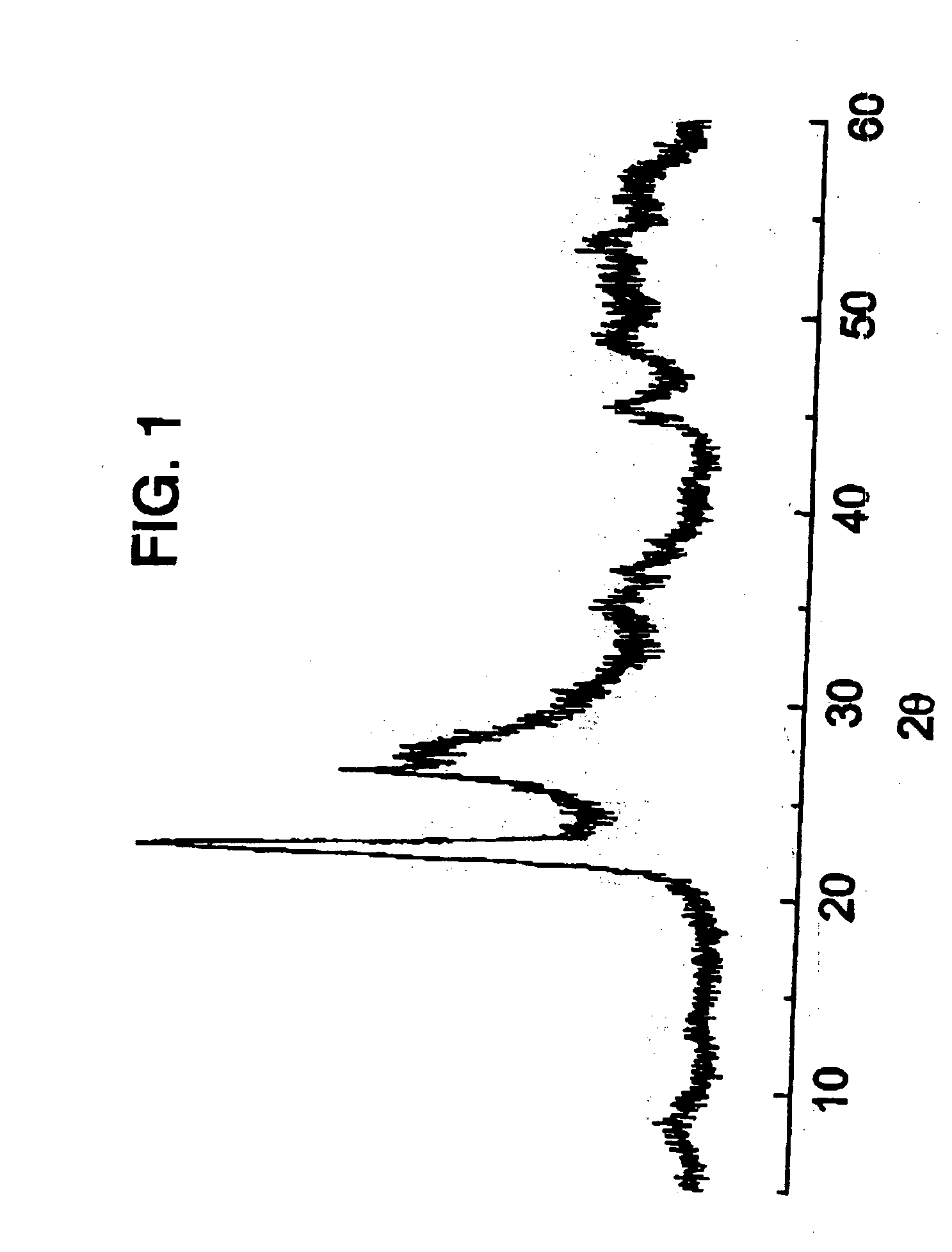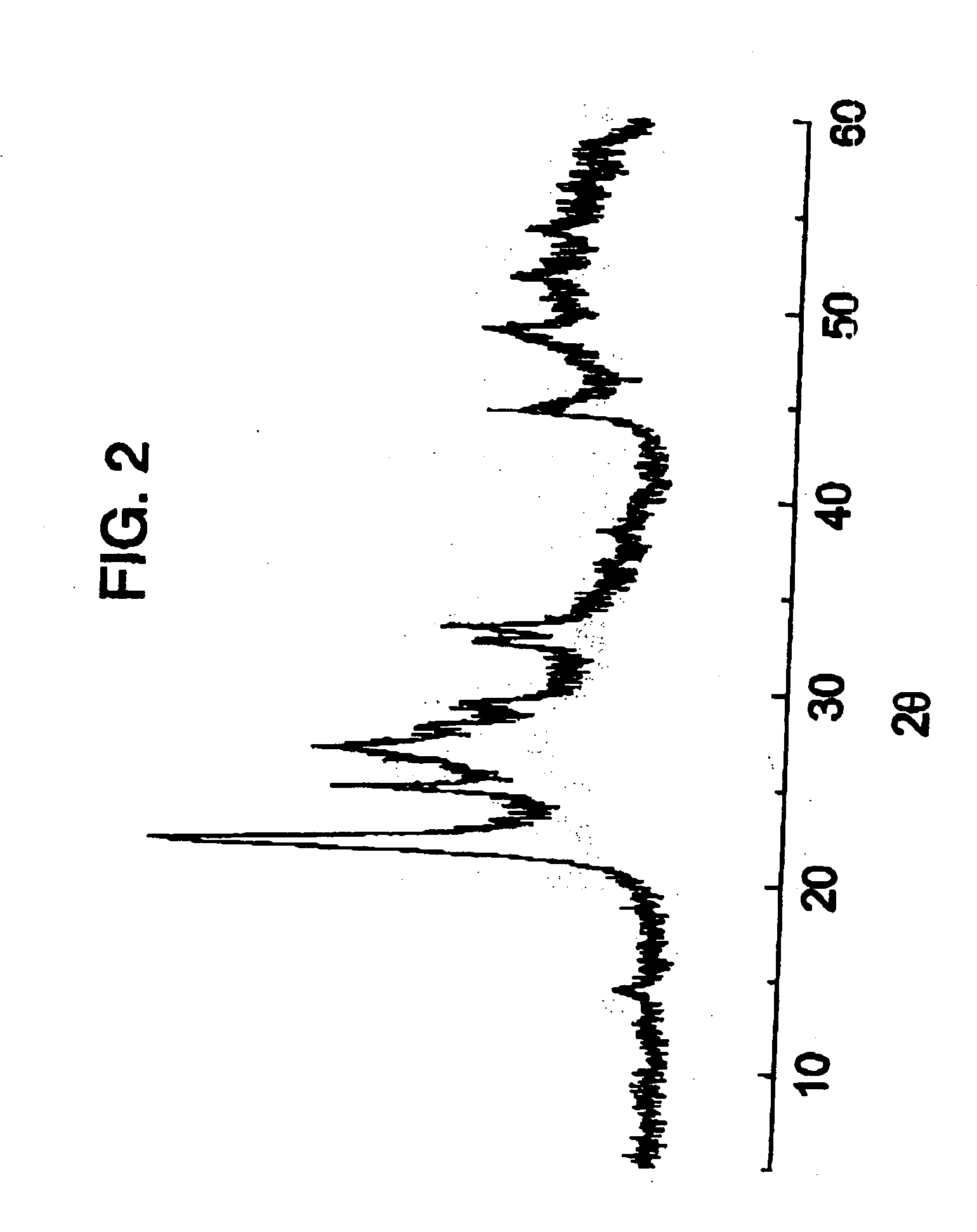Method for the oxidative dehydrogenation of ethane
- Summary
- Abstract
- Description
- Claims
- Application Information
AI Technical Summary
Problems solved by technology
Method used
Image
Examples
example 1
Preparation of an Oxidation Catalyst Based on a Mixed Oxide of Mo—Te—V—Nb—O by the Hydrothermal Method
[0069] 26.5 g of ammonium heptamolybdate tetrahydrate and 5.75 g of telluric acid are dissolved in 195.0 g of water at 80° C. Ammonium hydroxide (25% aqueous solution) is then added as far as pH=7.5. The water is evaporated from the solution obtained, with stirring, at 80° C. The resulting solid is dried in a kiln at 90° C. with the solid MT being obtained.
[0070] 30.0 g of the solid MT are suspended in 213.30 g of water at 80° C. and 9.01 g of yanadyl sulphate and 10.39 g of niobium (V) oxalate are added. The mixture is stirred and transferred to a steel autoclave with an internal lining of teflon. The autoclave is kept at 175° C., static, for 2 days The content of the autoclave is filtered, it is washed with distilled water and dried at 80° C. The solid obtained is calcined at 450° C. for 2 h in a current of nitrogen in order to obtain the catalyst. This catalyst is characterized...
example 2
Use of the Catalyst Described in Example 1 for the Oxidative Dehydrogenation of Ethane
[0071] 4.0 g of the catalyst described in example 1 were introduced into a fixed bed quartz reactor. The reaction was carried out using a mixture of gases, with a molar ratio of ethane:oxygen:helium=30 / 20 / 50, at a reaction temperature of 400° C. and a contact time, W / F, of 160 gcat h / (molC2). The results are shown in table 2.
example 3
Preparation of an Oxidation Catalyst Based on a Mixed Oxide of Mo—V—Nb—O
[0072] 80.0 g of ammonium heptamolybdate tetrahydrate and 15.87 g of ammonium metavanadate were dissolved in 1307 ml of hot water at 80° C. obtaining a uniform solution. Also, and after warming to 40° C., a solution (356.8 g) was prepared of niobium oxalate containing 53.97 millimols of niobium and it was added to the above solution obtaining a solution. The water of this solution was eliminated by evaporating with a rotavapor at 50° C., obtaining a solid. This solid was dried in a kiln at 110° C. for 24 h and was ground in order to obtain particle sizes of less than 0.25 mm. The resulting powder was calcined at 450° C. for 2 h in a nitrogen atmosphere in order to obtain the catalyst. The X-ray difractogram of that catalyst is shown in FIG. 2.
PUM
| Property | Measurement | Unit |
|---|---|---|
| Percent by mass | aaaaa | aaaaa |
| Angle | aaaaa | aaaaa |
| Angle | aaaaa | aaaaa |
Abstract
Description
Claims
Application Information
 Login to View More
Login to View More - R&D
- Intellectual Property
- Life Sciences
- Materials
- Tech Scout
- Unparalleled Data Quality
- Higher Quality Content
- 60% Fewer Hallucinations
Browse by: Latest US Patents, China's latest patents, Technical Efficacy Thesaurus, Application Domain, Technology Topic, Popular Technical Reports.
© 2025 PatSnap. All rights reserved.Legal|Privacy policy|Modern Slavery Act Transparency Statement|Sitemap|About US| Contact US: help@patsnap.com



